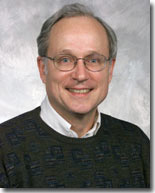Microsoft Big Brains: Butler Lampson

Just before retiring from day-to-day responsibilities at Microsoft in 2008, Chairman Bill Gates said that he expected Microsoft's 22 Technical Fellows to get a lot more publicly visible -- now that they wouldn't be living in his shadow. While some of the Microsoft fellows already have been active on the public-speaking circuit, many of them are not widely known outside the company.
Last year I launched this series -- "Microsoft Big Brains" -- to help remedy that shortcoming. In the coming weeks, I am hoping to profile as many of the company's tech fellows as to whom I can get access. Slowly but surely, I'm making my way through the list.
Microsoft's Technical Fellows came to the company via a variety of different routes. Some of them run divisions inside the company; some focus on particularly thorny technical issues that may span a variety of product units. Regardless of where they sit in the organization, the fellows all have been charged with helping Microsoft craft its next-gen products and strategies, much the way that Gates used his regular "Think Weeks" to prioritize what Microsoft needed to do next.

If there were a jack of all trades at Microsoft, Technical Fellow Butler Lampson would be at the top of the list of those deserving that title.
Lampson has only worked in one product group (Tablet PC) during his tenure at Microsoft. But as an "individual contributor," he has influenced many others across the company, ranging from the healthcare group, to the anti-piracy team.
These days, Lampson is spending the majority of his time working on the problem of data synchronization. He is focused on not just the back-end sync-integration challenges, but also on how to provide visual cues to users so they will know how "stale" the data is with which they are working.
Synchronization is at the crux of how Microsoft delivers on its three-screens-and-a-cloud strategy, and, as such, is a priority for everyone at Microsoft, from Chief Software Architect Ray Ozzie on down. Microsoft offers a host of synchronization-related products at at present, including Live Mesh, SkyDrive, Sync Framework, SQL Azure Sync Provider and SQL Server Replication.
(Lampson himself is using the Sync Framework as the starting point for most of his sync work. And it's the Sync Framework that Microsoft recently demonstrated as helping Silverlight apps to work offline. So maybe Sync Framework is leading the race among MIcrosoft's myriad sync technologies that will comprise the company's ultimate sync platform....)
"We need to be able to override the name space," Lampson said. "We do a so-so job at Microsoft with the four or five different products that we have.... But there is no one synchronization platform. And we can't figure out (how to create one) until we deploy" what we have."
Lampson isn't a believer in the "thin client story," he said; a world where there is next-to-no local processing happening on the client only is practical only in mainframe-centric organizations with 3270 terminals. Different kinds of clients need to be able to sync with different data sources, sometimes in an always-connected fashion and sometimes in occasionally connected ones. Administration and management advances are going to be key to how synchronization happens, he said.
There's a trade-off that needs to be made between consistency (currency) of data and availability of it, Lampson said. In some applications, consistency can be replaced acceptably with "eventual consistency" (as in the case of e-mail and DNS).
Synchronization isn't the only realm where Lampson is spending most of his cycles. He is also interested in the more philosophical problems around the interaction between computers and the physical world.
Computers, in the early part of their lifecycle, were used to simulate and model the physical world. In the 80s, computers were used as the hub of communications. The next big wave of computing will involve "embodiment," Lampson said, citing as examples the Roomba, self-driving cars and robot receptionists. In the embodiment wave, robotics, sensecams and GPS technologies will be essential elements of the next wave of computing devices, Lampson noted.
For all of the “Microsoft Big Brains” profiles, check outthe Big Brains page.